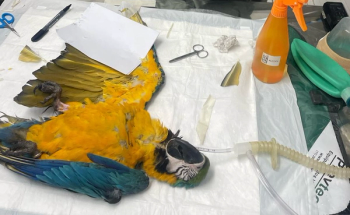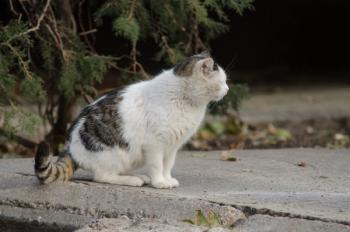
AAEP guidelines take shot at controlling infectious outbreaks
Lexington, Ky.- In combating an infectious disease outbreak, communication is key.
LEXINGTON, KY.— In combating an infectious disease outbreak, communication is key.
"I remember starting at 6 a.m. and my cell phone was dead by noon," says Dr. Mary C. Scollay, chair of AAEP's Infectious Disease Task Force, in fending off a 2004 outbreak of Streptococcus equi that impacted thousands of horses in terms of transportation and left 30 animals ill.
Dr. Mary C. Scollay
Battling infectious disease was the impetus of last month's release of detailed guidelines by the American Association of Equine Practitioners (AAEP). Scollay chaired the committee.
"Communication is one of the most critical issues in any outbreak," she told DVM Newsmagazine. "You have consumer confidence to deal with."
The lesson for this Fort Lauderdale, Fla., racetrack veterinarian? A good offense beats a reactionary defense. "Don't wait until you have a diagnosis to contain disease. Take steps in advance of a diagnosis," she advises.
"Our objective is to assist practitioners once an infectious disease is identified," she says. "Our expectation is that these guidelines will assist veterinarians and equine caretakers in minimizing the impact of infectious disease in a given horse population."
The guidelines delve into topics like pre-outbreak considerations, risk management, resource management and details targeting specific diseases for veterinarians, including:
- Recommendations for the implementation of a management plan before an outbreak occurs;
- Guidelines for specific diseases for respiratory, neurologic, diarrheal and vesicular disease;
- Biosecurity instructions in English and Spanish for horse caretakers.
Assessing the threat
When it comes to human health, rabies tops the list of infectious disease threats, she says. If you are looking at horse illness, influenza moves up a few degrees.
"One single case of rabies is enormous in that thousands of people could have been exposed to this horse." As far as disease spread and difficulty in containment, influenza tops the charts because the virus can travel up to 50 yards in the air. "It can readily transfer without horse movement or human movement," Scollay adds.
While influenza isn't life threatening typically, it's an economic loser through lost training, competition, movement of horses and the expense to treat. "It can have a huge economic impact even though at the end of the ordeal you still have a healthy horse," she adds.
The typical horse track is an unnaturally dense population of horses. One track could have 1,600 stalls. When you consider movement of horses from the area, one racetrack could see as many 4,000 animals cycle through its gates in a day. If a horse takes an infectious disease back to its barn, the spread can be exponential.
"When a large group of horses gather, be it at a racetrack or a horse show, all those involved in the horses' care should be vigilant about monitoring the health of animals. It is key that the presence of contagious disease be quickly identified and responsibly addressed," Scollay says.
"The veterinarian on the scene," AAEP says, "is the most qualified person to initiate the outbreak control plan, and is critical to effective outbreak management. Each infectious disease outbreak is unique, and an existing plan may require modification for specific situations.
"These symptom-based guidelines provide a detailed action plan for veterinarians as they address a possible infectious disease outbreak. From the point at which a case of infectious disease is suspected, the guidelines offer measures to control the spread of infection, diagnostic testing options and communication considerations," AAEP reports.
Other members of the task force were made up of leading researchers, internal medicine specialists and private practitioners, including:
- William Bernard, DVM, Dipl. ACVIM;
- Brian S. Carroll, DVM;
- Roberta M. Dwyer, DVM, MS, Dipl. ACVPM;
- Robert E. Holland Jr., DVM, PhD;
- Daniel G. Kenney, VMD, Dipl. ACVIM;
- Maureen T. Long, DVM, PhD;
- Paul Lunn, BVSc, MS, PhD, MRCVS;
- Josie L. Traub-Dargatz, DVM, MS, Dipl. ACVIM.
The guidelines are available through the members-only area at
Newsletter
From exam room tips to practice management insights, get trusted veterinary news delivered straight to your inbox—subscribe to dvm360.






